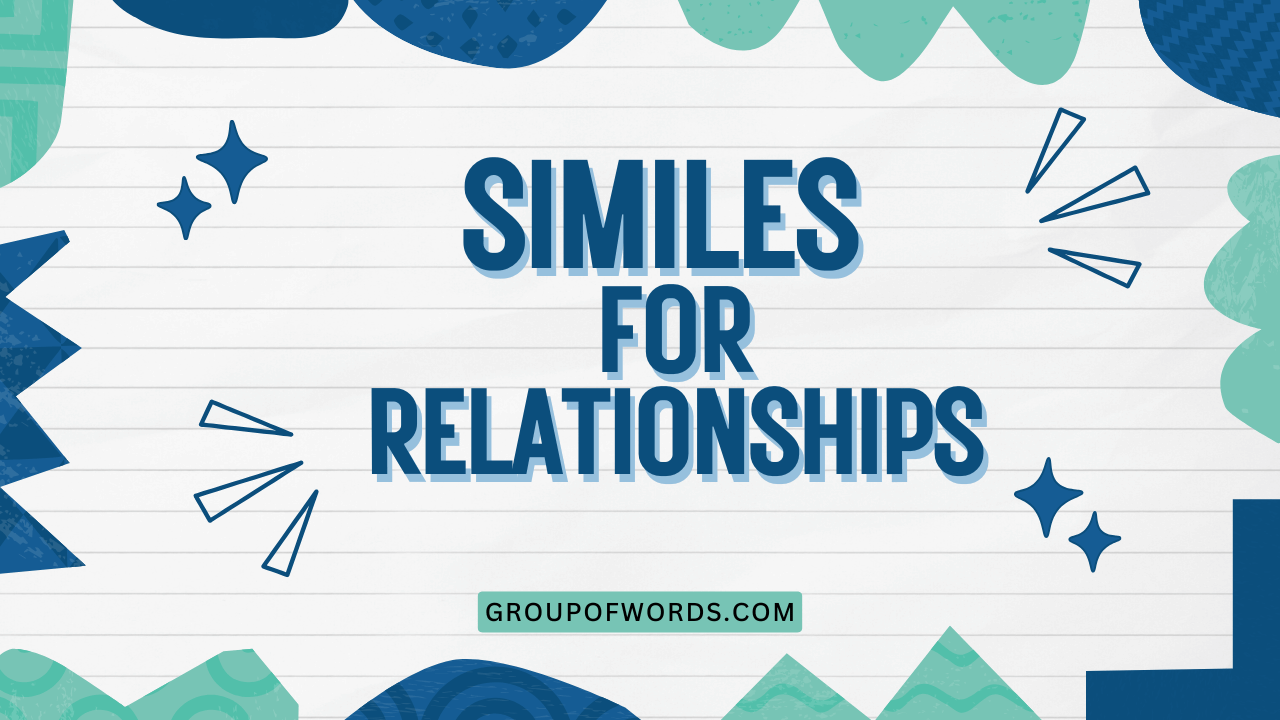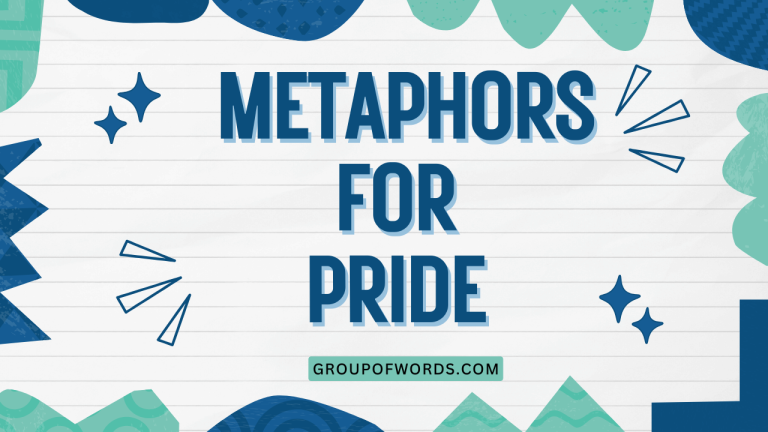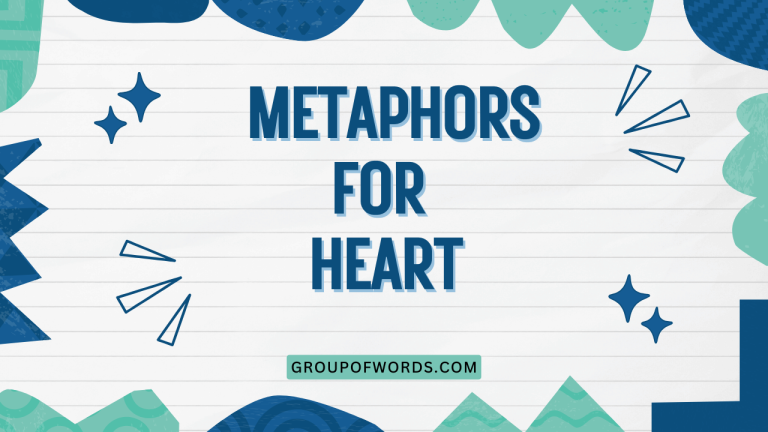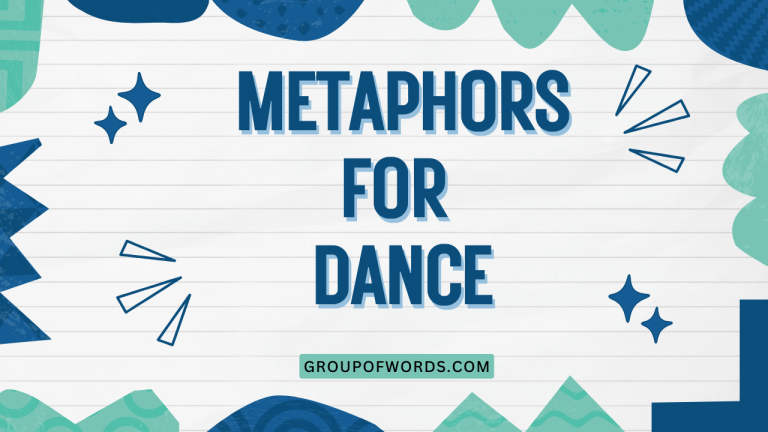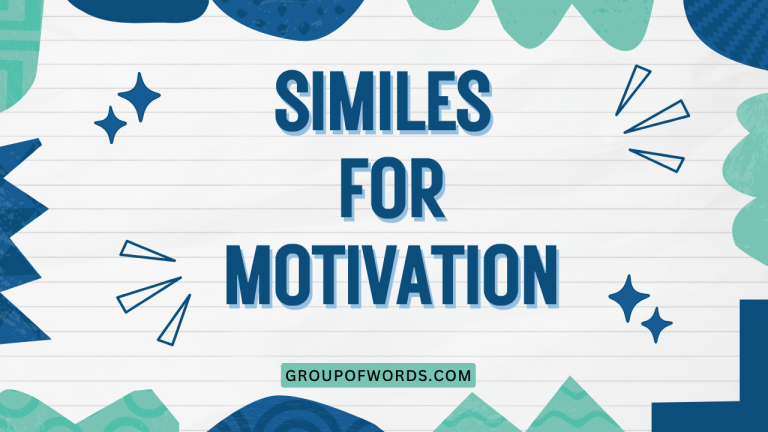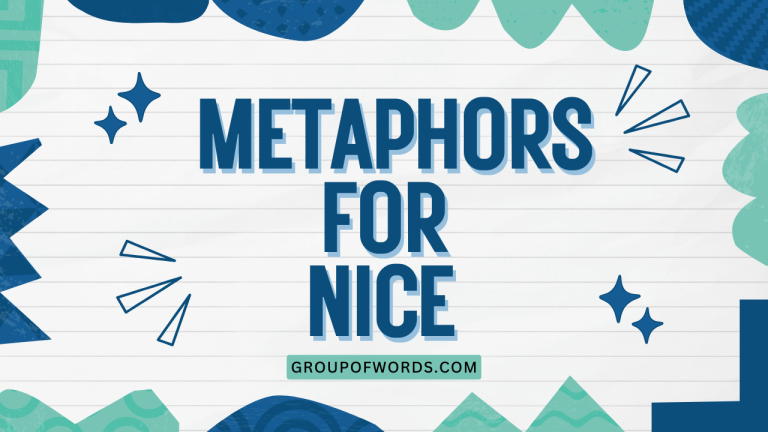Similes for Relationships: A Comprehensive Guide
Understanding similes is essential for enriching your English language skills, especially when describing complex topics like relationships. Similes allow you to draw vivid comparisons, making your writing and speech more engaging and relatable.
This article provides a detailed exploration of similes used to describe relationships, covering their definition, structure, different types, and practical usage. Whether you’re an English language learner, a student, or simply someone who wants to improve their communication skills, this guide will equip you with the knowledge and tools to effectively use similes in the context of relationships.
Table of Contents
- Introduction
- Definition of Simile
- Structural Breakdown of Similes
- Types of Relationship Similes
- Examples of Relationship Similes
- Usage Rules for Similes
- Common Mistakes When Using Similes
- Practice Exercises
- Advanced Topics: Nuances and Subtleties
- Frequently Asked Questions
- Conclusion
Definition of Simile
A simile is a figure of speech that compares two unlike things using the words “like” or “as.” It’s a powerful tool for creating vivid imagery and conveying complex ideas in a relatable way. Unlike metaphors, which directly equate two things, similes suggest a similarity rather than a complete identity. Similes add depth and color to language, making descriptions more engaging and memorable.
In the context of relationships, similes can be used to describe the nature of the connection between people, the dynamics within the relationship, and the emotions involved. They allow us to paint a picture of the relationship using familiar concepts, making it easier for others to understand and empathize.
Classification of Similes
Similes can be classified based on the aspect of comparison they emphasize. They can highlight similarities in:
- Appearance: Comparing the physical attributes or outward presentation
- Behavior: Comparing actions, habits, or tendencies
- Emotion: Comparing feelings, moods, or emotional states
- Function: Comparing the role or purpose served by the relationship
- Quality: Comparing characteristics, traits, or attributes
Function of Similes
The primary function of a simile is to enhance understanding through comparison. By linking an abstract concept (like a relationship) to a more concrete one, similes make the abstract more accessible and relatable. They also serve to:
- Create vivid imagery: Similes paint a picture in the reader’s mind.
- Emphasize a particular quality: They can highlight a specific aspect of the relationship.
- Add emotional depth: Similes can convey the emotional tone of the relationship.
- Make language more engaging: They make writing and speech more interesting.
Contexts for Using Similes
Similes are appropriate in a wide range of contexts, including:
- Literature: Novels, poems, and short stories often use similes to enrich descriptions.
- Everyday conversation: Similes can add color to casual speech.
- Creative writing: They are a valuable tool for writers seeking to create vivid imagery.
- Academic writing: While less common, similes can be used to explain complex ideas in a more accessible way.
- Personal narratives: In describing personal experiences, similes can help convey the emotional impact.
Structural Breakdown of Similes
The basic structure of a simile involves three key components: the subject (the relationship being described), the linking word (“like” or “as”), and the comparison (the thing the relationship is being compared to). Understanding this structure is crucial for creating effective and meaningful similes.
The Subject
The subject is the entity being described. In the context of this article, the subject is always a relationship.
This could be a romantic relationship, a friendship, a family relationship, or any other type of interpersonal connection. It’s important to clearly define the subject before crafting the simile.
For example, in the simile “Their friendship was like a well-worn leather jacket,” the subject is “Their friendship.”
The Linking Word
The linking word is either “like” or “as.” These words signal that a comparison is being made, rather than a direct equation. While both words are generally interchangeable, “as” is sometimes considered more formal.
Examples:
- “Their love was like a raging fire.”
- “Their bond was strong as steel.”
The Comparison
The comparison is the object or idea that the subject is being likened to. This is where the creativity and effectiveness of the simile come into play.
The comparison should be something that shares a relevant characteristic with the subject, making the simile meaningful and insightful.
For instance, in the simile “Their relationship was like a rollercoaster,” the comparison is “a rollercoaster.” This suggests that the relationship is characterized by ups and downs, excitement, and perhaps a bit of fear.
Common Simile Patterns
Here are some common patterns you’ll see in similes:
- Subject + Linking Word + Comparison: “Their marriage was like a calm sea.”
- As + Adjective + As + Subject: “As strong as an ox, their commitment endured.”
Types of Relationship Similes
Relationship similes can be categorized based on the specific aspect of the relationship they highlight. Understanding these categories can help you choose the most appropriate simile for your intended meaning.
Similes Describing Strength and Stability
These similes emphasize the resilience, durability, and unwavering nature of the relationship. They often use comparisons to solid objects, natural forces, or enduring concepts.
Examples: as solid as a rock, like a fortress, as strong as an oak, like an anchor in a storm.
Similes Describing Passion and Intensity
These similes focus on the fiery, passionate, and all-consuming aspects of the relationship. They often use comparisons to fire, storms, or other intense experiences.
Examples: like a burning flame, as intense as a thunderstorm, like a volcano erupting, as passionate as a tango.
Similes Describing Comfort and Nurturing
These similes highlight the comforting, supportive, and nurturing aspects of the relationship. They often use comparisons to warm objects, gentle forces, or caring figures.
Examples: like a warm blanket, as comforting as a mother’s hug, like a safe harbor, as nurturing as sunshine.
Similes Describing Complexity and Change
These similes acknowledge the multifaceted, evolving, and sometimes unpredictable nature of relationships. They often use comparisons to dynamic systems, natural processes, or complex machines.
Examples: like a rollercoaster, as complex as a spiderweb, like a flowing river, as changeable as the seasons.
Similes Describing Fragility and Vulnerability
These similes emphasize the delicate, easily damaged, and vulnerable aspects of the relationship. They often use comparisons to fragile objects, delicate creatures, or easily broken things.
Examples: like a delicate flower, as fragile as glass, like a butterfly’s wing, as vulnerable as a newborn.
Examples of Relationship Similes
Here are several examples of similes used to describe different aspects of relationships, categorized for clarity.
Strength and Stability Examples
The following table provides examples of similes that describe the strength and stability of relationships. These similes evoke a sense of permanence, resilience, and reliability.
| Simile | Meaning |
|---|---|
| Their love was like a rock, unyielding and strong. | The relationship is steadfast and unwavering. |
| Their bond was as solid as an oak, weathering any storm. | The relationship can withstand challenges and difficulties. |
| Their commitment was like an anchor, holding them steady through life’s turbulent waters. | The relationship provides stability and security. |
| Their friendship was as strong as steel, unbreakable and enduring. | The relationship is resilient and long-lasting. |
| Their marriage was like a fortress, protecting them from the outside world. | The relationship offers safety and security. |
| Their connection was like a deep-rooted tree, growing stronger with each passing year. | The relationship is firmly established and continues to develop. |
| Their partnership was as reliable as the sunrise, always there to begin a new day. | The relationship is dependable and consistent. |
| Their support for each other was like a brick wall, impenetrable and unwavering. | They steadfastly support each other. |
| Their understanding was as firm as granite, unshakeable by doubts. | They have an unshakeable understanding. |
| Their loyalty was like a north star, always guiding them back to each other. | Their loyalty always brings them back together. |
| Their shared history was like a well-built bridge, connecting their past to their present. | They share a strong, connecting history. |
| Their trust was as unwavering as a mountain, providing a stable base for their relationship. | Their trust is solid and dependable. |
| Their devotion was like a sacred vow, unbreakable and deeply felt. | Their devotion to each other is unbreakable. |
| Their relationship was as constant as the tides, always present and reliable. | Their relationship is always there for them. |
| Their love was like a stalwart oak, standing tall against the winds of adversity. | Their love is strong and able to withstand hardship. |
| Their commitment was as unbreakable as a diamond, precious and enduring. | Their commitment is precious and enduring. |
| Their friendship was like a sturdy ship, sailing smoothly through calm and stormy seas. | Their friendship is reliable and can weather troubles. |
| Their bond was as resilient as bamboo, bending but never breaking under pressure. | Their bond is tough but flexible. |
| Their connection was like a long-lasting flame, never flickering out despite the passage of time. | Their connection stands the test of time. |
| Their relationship was as dependable as gravity, always pulling them back together. | Their relationship always draws them back together. |
Passion and Intensity Examples
The following table illustrates similes that convey the passion and intensity within relationships. These comparisons often involve vivid imagery of fire, storms, or other powerful forces.
| Simile | Meaning |
|---|---|
| Their love was like a raging fire, consuming them both. | The relationship is passionate and intense. |
| Their arguments were as fierce as a storm, leaving destruction in their wake. | The arguments are intense and damaging. |
| Their passion was like a volcano erupting, uncontrollable and explosive. | The passion is overwhelming and unpredictable. |
| Their chemistry was as electric as lightning, sparking instant attraction. | The attraction is immediate and powerful. |
| Their connection was like a burning flame, never dimming. | The relationship is consistently passionate. |
| Their desire for each other was like a tidal wave, overwhelming everything in its path. | The desire is strong and all-encompassing. |
| Their energy together was as intense as a supernova, radiating brightly. | Their combined energy is extraordinary and captivating. |
| Their love was like a wildfire, spreading quickly and uncontrollably. | Their love is fast and consuming. |
| Their passion was as fiery as the sun, burning with intense heat. | Their passion is hot and intense. |
| Their connection was like a powerful magnet, drawing them irresistibly together. | They are irresistibly drawn to each other. |
| Their emotions were like a turbulent sea, always shifting and unpredictable. | Their emotions are always changing. |
| Their anger was as scalding as lava, causing immense pain. | Their anger is extremely painful. |
| Their arguments were like a battlefield, filled with strife and conflict. | Their arguments are full of conflict. |
| Their attraction was as magnetic as the earth’s core, pulling them inexorably closer. | They are inextricably attracted to each other. |
| Their love was like a blazing inferno, consuming their thoughts and actions. | Their love consumes their thoughts. |
| Their jealousy was as sharp as a knife, cutting deeply into their trust. | Their jealousy is distrustful and painful. |
| Their connection was like a high-voltage current, shocking and invigorating. | Their connection is shocking and invigorating. |
| Their passion was as explosive as dynamite, capable of sudden and dramatic outbursts. | Their passion can cause sudden drama. |
| Their love was like a raging torrent, sweeping away all obstacles in its path. | Their love overcomes all obstacles. |
| Their arguments were as volatile as nitroglycerin, prone to sudden and unpredictable explosions. | Their arguments are prone to explosions. |
Comfort and Nurturing Examples
The following table presents similes that describe the comfort and nurturing aspects of relationships. These similes often evoke feelings of warmth, safety, and support.
| Simile | Meaning |
|---|---|
| Their love was like a warm blanket on a cold night. | The relationship provides comfort and security. |
| Their presence was as comforting as a mother’s hug. | The person provides a sense of safety and reassurance. |
| Their relationship was like a safe harbor, sheltering them from the storms of life. | The relationship offers protection and security. |
| Their support was as nurturing as sunshine, helping them grow and thrive. | The support is beneficial and encouraging. |
| Their understanding was like a gentle breeze, soothing and calming. | The understanding is peaceful and reassuring. |
| Their companionship was like a cozy fireplace, providing warmth and comfort. | The companionship is comforting and inviting. |
| Their kindness was as soft as a feather, gentle and comforting. | The kindness is delicate and reassuring. |
| Their love was like a soothing balm, healing all wounds. | Their love heals all wounds. |
| Their friendship was as refreshing as a cool drink on a hot day. | Their friendship is refreshing. |
| Their presence was like a ray of sunshine, bringing light and joy into their lives. | Their presence is full of joy. |
| Their support was like a steady hand, guiding them through difficult times. | Their support is reliable. |
| Their understanding was as deep as a still lake, reflecting tranquility and peace. | Their understanding is peaceful. |
| Their affection was like a tender embrace, warm and comforting. | Their affection is warm and comforting. |
| Their care was as gentle as a lullaby, soothing their worries and fears. | Their care soothes all worries. |
| Their love was like a warm cup of tea, comforting and familiar. | Their love is comforting and familiar. |
| Their friendship was as inviting as a comfortable armchair, always welcoming and relaxing. | Their friendship is welcoming and relaxing. |
| Their presence was like a calming melody, creating a sense of peace and serenity. | Their presence is calming. |
| Their support was as reliable as a lighthouse, guiding them safely through stormy seas. | Their support is reliable. |
| Their understanding was like a soft pillow, cushioning them from life’s hard knocks. | Their understanding softens harsh blows. |
| Their affection was as gentle as a mother’s touch, tender and caring. | Their affection is gentle. |
Complexity and Change Examples
The following table offers similes that capture the complexity and ever-changing nature of relationships. These comparisons often use dynamic systems or natural processes to illustrate the evolving dynamics.
| Simile | Meaning |
|---|---|
| Their relationship was like a rollercoaster, full of ups and downs. | The relationship is characterized by excitement and uncertainty. |
| Their connection was as complex as a spiderweb, intricately woven. | The relationship has many interconnected elements. |
| Their love was like a flowing river, constantly changing and evolving. | The relationship is dynamic and progressive. |
| Their relationship was as changeable as the seasons, going through different phases. | The relationship experiences different periods and transformations. |
| Their dynamics were like a dance, sometimes in sync, sometimes out of step. | The relationship involves coordination and occasional discord. |
| Their communication was like a maze, full of twists and turns. | Communication can be difficult and confusing. |
| Their relationship was as unpredictable as the weather, sometimes sunny, sometimes stormy. | The relationship can be volatile and uncertain. |
| Their love was like a garden, requiring constant care and attention. | Their love needs constant care. |
| Their connection was as intricate as a tapestry, woven with different threads of experience. | Their connection is intricate and complex. |
| Their relationship was like a jigsaw puzzle, with many pieces that need to fit together. | Their relationship needs all its pieces to work. |
| Their dynamics were like a symphony, with different instruments playing their part. | Their relationship has many parts working together. |
| Their communication was as layered as an onion, with many levels of meaning. | Their communication runs deep. |
| Their relationship was like a kaleidoscope, constantly shifting and revealing new patterns. | Their relationship is always changing. |
| Their love was as multifaceted as a diamond, reflecting different aspects of their personalities. | Their love has many facets. |
| Their connection was like a complex algorithm, with many variables influencing the outcome. | Their connection has many variables. |
| Their relationship was as fluid as water, adapting to different circumstances. | Their relationship adapts quickly. |
| Their dynamics were like a chess game, requiring strategy and foresight. | Their dynamics require planning. |
| Their communication was like a winding road, full of unexpected turns and detours. | Their communication has many complications. |
| Their relationship was like a living organism, constantly growing and evolving. | Their relationship is always growing. |
| Their love was as deep as the ocean, with hidden depths and unexplored territories. | Their love has hidden depths. |
Fragility and Vulnerability Examples
The following table provides similes that highlight the fragile and vulnerable aspects of relationships. These comparisons often involve delicate objects or creatures to convey the sense of sensitivity and potential for damage.
| Simile | Meaning |
|---|---|
| Their trust was like a delicate flower, easily crushed. | The trust is fragile and easily broken. |
| Their relationship was as fragile as glass, easily shattered. | The relationship is delicate and easily damaged. |
| Their love was like a butterfly’s wing, easily torn. | The love is delicate and vulnerable. |
| Their feelings were as vulnerable as a newborn, needing constant protection. | The feelings are tender and require care. |
| Their bond was like a thin thread, easily snapped. | The bond is weak and easily broken. |
| Their hope was like a flickering candle, easily extinguished. | The hope is fragile and easily lost. |
| Their dreams were as delicate as snowflakes, easily melted. | The dreams are vulnerable and easily destroyed. |
| Their happiness was like a soap bubble, easily popped. | Their happiness is fleeting. |
| Their patience was as thin as ice, easily cracked. | Their patience is easily broken. |
| Their relationship was like a worn-out book, easily damaged with each read. | Their relationship is worn out. |
| Their secrets were like eggshells, easily broken and revealed. | Their secrets are easily revealed. |
| Their promises were as light as feathers, easily blown away by the wind. | Their promises are unreliable. |
| Their understanding was like a cobweb, easily torn by harsh words. | Their understanding is easily damaged. |
| Their love was as transient as a rainbow, beautiful but fleeting. | Their love is fleeting. |
| Their connection was like a tightrope, requiring constant balance to avoid a fall. | Their connection needs constant balance. |
| Their hopes were as frail as a newborn bird, needing gentle care to survive. | Their hopes are fragile. |
| Their dreams were like sandcastles, easily washed away by the tides of reality. | Their dreams are fleeting. |
| Their relationship was as breakable as fine china, requiring careful handling. | Their relationship needs care. |
| Their trust was like a single thread, easily cut by betrayal. | Their trust is easily broken. |
| Their hearts were as tender as a newborn’s skin, easily bruised by harsh words or actions. | Their hearts are easily hurt. |
Usage Rules for Similes
Using similes effectively requires an understanding of certain rules and guidelines. While similes are a creative tool, adhering to these rules ensures clarity and impact.
Clarity and Relevance
The comparison should be clear and relevant to the subject. The reader should be able to easily understand the connection between the two things being compared.
Avoid comparisons that are too obscure or far-fetched.
Example: Good: “Their love was like a warm fire, providing comfort and light.” Bad: “Their love was like a quantum entanglement, mysteriously linked.”
Originality and Freshness
While some common similes are effective, strive for originality to make your writing more engaging. Overused similes can sound cliché and lose their impact.
Try to find fresh and unexpected comparisons.
Example: Avoid: “Their love was like a rose.” (Cliché) Try: “Their love was like a newly discovered star, shining brightly with unique radiance.”
Consistency of Tone
The tone of the simile should be consistent with the overall tone of your writing. Avoid using similes that clash with the mood or style of the piece.
Example: If you’re writing a serious and somber piece, avoid using humorous or lighthearted similes.
Avoiding Mixed Metaphors and Similes
Be careful not to mix metaphors and similes within the same sentence or passage. This can create confusion and undermine the effectiveness of your writing.
Example: Incorrect: “Their love was like a raging fire, but it also needed to be watered to grow.” (Mixing fire and plant metaphors.)
Appropriateness for Audience
Consider your audience when choosing similes. A simile that is effective for one audience may not be appropriate for another.
Take into account the age, background, and cultural context of your readers.
Example: A simile that relies on knowledge of a specific cultural reference may not be understood by all readers.
Common Mistakes When Using Similes
Even experienced writers can make mistakes when using similes. Being aware of these common errors can help you avoid them in your own writing.
| Mistake | Incorrect Example | Correct Example |
|---|---|---|
| Using a metaphor instead of a simile | Their love was a warm fire. | Their love was like a warm fire. |
| Using a cliché simile | Their love was like a rose. | Their love was like a hidden garden, full of unexpected blooms. |
| Creating an unclear comparison | Their relationship was like a doorknob. | Their relationship was like a revolving door, constantly changing. |
| Mixing metaphors and similes | Their love was a raging fire, but it needed to be watered to grow. | Their love was like a raging fire, consuming everything in its path. OR Their love was like a delicate plant, needing constant care to grow. |
| Using an inappropriate simile for the tone | Their grief was like a party popper. | Their grief was like a heavy weight, pressing down on their chest. |
Practice Exercises
Test your understanding of similes with these practice exercises. Identify the type of simile and rewrite sentences to improve their effectiveness.
Exercise 1: Identifying Simile Types
Identify the type of relationship simile used in each sentence (Strength and Stability, Passion and Intensity, Comfort and Nurturing, Complexity and Change, Fragility and Vulnerability).
| Question | Answer |
|---|---|
| 1. Their love was like a warm blanket on a cold night. | Comfort and Nurturing |
| 2. Their arguments were as fierce as a storm. | Passion and Intensity |
| 3. Their bond was as solid as an oak. | Strength and Stability |
| 4. Their relationship was like a rollercoaster, full of ups and downs. | Complexity and Change |
| 5. Their trust was like a delicate flower, easily crushed. | Fragility and Vulnerability |
| 6. Their support was as nurturing as sunshine, helping them grow and thrive. | Comfort and Nurturing |
| 7. Their passion was like a volcano erupting, uncontrollable and explosive. | Passion and Intensity |
| 8. Their commitment was like an anchor, holding them steady through life’s turbulent waters. | Strength and Stability |
| 9. Their communication was like a maze, full of twists and turns. | Complexity and Change |
| 10. Their dreams were as delicate as snowflakes, easily melted. | Fragility and Vulnerability |
Exercise 2: Rewriting Cliché Similes
Rewrite the following cliché similes to make them more original and engaging.
| Question | Answer |
|---|---|
| 1. Their love was like a rose. | Their love was like a rare orchid, blooming unexpectedly in the heart of winter. |
| 2. Their friendship was as good as gold. | Their friendship was as reliable as a compass, always pointing them in the right direction. |
| 3. Their marriage was like a dream. | Their marriage was like a shared canvas, each day adding new colors and textures to their masterpiece. |
| 4. Their connection was like two peas in a pod. | Their connection was like two branches of the same tree, growing intertwined towards the sun. |
| 5. Their relationship was like a fairytale. | Their relationship was like a well-loved story, filled with adventures, challenges, and a bond that deepened with each chapter. |
| 6. Their love was like a shining star. | Their love was like a lighthouse beam, guiding them safely through the darkest storms. |
| 7. Their bond was as strong as an ox. | Their bond was as resilient as a rubber band, stretching but never breaking under pressure. |
| 8. Their affection was as sweet as honey. | Their affection was as comforting as a warm cup of cocoa on a snowy evening. |
| 9. Their relationship was like a walk in the park. | Their relationship was like a carefully tended garden, requiring constant care and attention to flourish. |
| 10. Their love was like a river. | Their love was like a winding stream, carving its own unique path through the landscape of their lives. |
Exercise 3: Completing the Simile
Complete the following similes with an appropriate comparison related to relationships.
| Question | Answer |
|---|---|
| 1. Their communication was like __________. | Their communication was like a delicate dance, requiring careful steps and mutual understanding. |
| 2. Their support for each other was as strong as __________. | Their support for each other was as strong as a mountain range, unyielding and steadfast. |
| 3. Their passion burned like __________. | Their passion burned like a roaring bonfire, illuminating their lives
and warming their hearts. |
| 4. Their trust was as fragile as __________. | Their trust was as fragile as spun glass, requiring the utmost care to preserve its beauty. |
| 5. Their relationship was like __________. | Their relationship was like a complex melody, with harmonies and dissonances creating a unique and beautiful song. |
Advanced Topics: Nuances and Subtleties
Mastering the use of similes involves understanding the nuances and subtleties that can enhance their effectiveness. This section explores advanced topics such as implied similes, extended similes, and the use of similes to create complex emotional effects.
Implied Similes
An implied simile is a simile that does not explicitly use the words “like” or “as.” Instead, it suggests a comparison through subtle language and imagery. This technique can add depth and sophistication to your writing.
Example: Instead of saying “Their love was like a gentle breeze,” you might say “Their love whispered through their lives, a gentle caress on a summer’s day.”
Extended Similes
An extended simile is a simile that is developed over several sentences or even a paragraph. This allows you to explore the comparison in greater detail, creating a more vivid and impactful image.
Example: “Their relationship was like a garden. At first, it was just a few seeds of attraction, planted in the fertile ground of shared interests. They tended to it carefully, watering it with open communication and fertilizing it with acts of kindness. Over time, the seeds sprouted, and their love blossomed into a vibrant tapestry of colorful flowers, each one representing a different aspect of their bond. Like any garden, it required constant care and attention, but the rewards were immeasurable.”
Creating Complex Emotional Effects
Similes can be used to evoke a wide range of emotional responses in the reader. By carefully choosing your comparisons, you can create feelings of joy, sadness, anger, fear, or any other emotion.
Consider the emotional connotations of your similes and how they will impact your audience.
Example: To create a feeling of sadness, you might use similes that evoke images of loss, loneliness, or decay. To create a feeling of joy, you might use similes that evoke images of warmth, light, and happiness.
Cultural Sensitivity in Similes
When using similes, especially in diverse contexts, be mindful of cultural sensitivities. A comparison that resonates positively in one culture might be misunderstood or even offensive in another.
Research and consider your audience’s background to ensure your similes are appropriate and respectful.
Example: Comparisons involving animals, religious symbols, or historical events can carry different meanings across cultures. Always aim for inclusivity and avoid perpetuating stereotypes.
Frequently Asked Questions
What is the difference between a simile and a metaphor?
A simile compares two things using “like” or “as,” while a metaphor directly equates two things without using those words. Similes suggest a similarity, whereas metaphors assert an identity.
Can a simile be too long?
Yes, a simile can be too long if it becomes convoluted or detracts from the main point. Keep similes concise and focused to maintain clarity.
How can I avoid using cliché similes?
Strive for originality by thinking outside the box and finding fresh, unexpected comparisons. Consider the specific qualities you want to emphasize and brainstorm unique ways to express them.
Is it okay to use similes in formal writing?
While similes are more common in creative writing, they can be used in formal writing if they enhance clarity and understanding. Use them sparingly and ensure they are appropriate for the tone and audience.
How do I choose the right simile for my writing?
Consider the context, tone, and audience of your writing. Choose similes that are clear, relevant, and consistent with the overall message you want to convey.
Can similes be used to describe abstract concepts?
Yes, similes are particularly effective for describing abstract concepts by comparing them to more concrete or familiar things. This makes the abstract more accessible and relatable.
Conclusion
Similes are a powerful tool for enhancing your descriptions of relationships, adding depth, color, and emotional resonance to your writing and speech. By understanding the structure, types, and usage rules of similes, you can effectively convey the complexities and nuances of interpersonal connections.
Whether you’re a student, a writer, or simply someone who wants to improve their communication skills, mastering the art of simile will undoubtedly enrich your ability to express yourself and connect with others.
